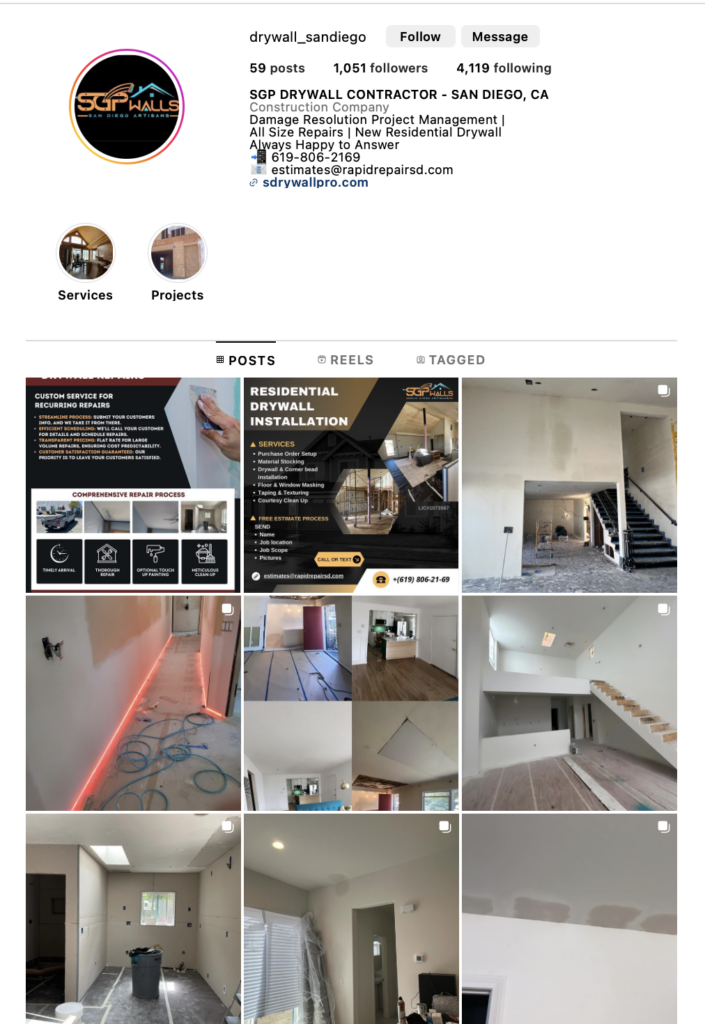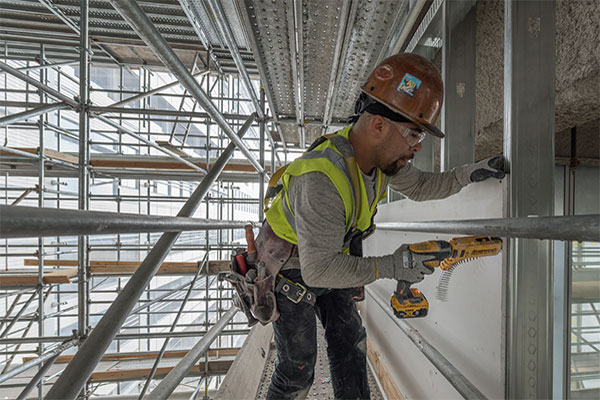Reliable Drywall Repair Techniques to Recover Your Wall surfaces
Reliable Drywall Repair Techniques to Recover Your Wall surfaces
Blog Article
Drywall Setup Made Easy: Tips for Perfect Results
Drywall installation is usually viewed as a challenging task, yet with the ideal strategy and expertise, it can end up being a manageable undertaking. Selecting quality products and preparing the installment location are important primary steps that set the foundation for success. Mastering techniques for cutting, hanging, and ending up drywall can significantly influence the outcome. As we explore these necessary suggestions, you might discover that also the smallest adjustments in your technique can result in remarkably improved outcomes, leaving you to think about exactly how these methods can transform your next job.
Selecting the Right Materials
Selecting the proper products for drywall installation is vital to attaining a sturdy and aesthetically pleasing coating. sheetrock repair fort worth. The main part, drywall sheets, normally come in different thicknesses, with 1/2-inch sheets being typical for interior walls. For locations requiring additional moisture resistance, such as cooking areas or shower rooms, consider making use of environment-friendly board or cement board, which are particularly developed to withstand moisture

Furthermore, choosing the best fasteners-- either screws or nails-- is necessary for safeguarding the drywall to the framing. Drywall screws are normally favored for their holding power and lowered risk of standing out. Last but not least, take into consideration the complements such as primer and paint, which not only enhance the look but likewise shield the drywall from moisture and wear.
Preparing the Setup Location
Prior to starting the drywall setup process, it is vital to prepare the setup location completely. A tidy workspace lessens the risk of damages to existing things and allows for effective motion throughout installment.
Following, examine the walls and ceiling for any kind of blemishes, such as splits, holes, or mold and mildew. Address these concerns ahead of time; patch any type of damages and allow sufficient time for repairs to completely dry. Furthermore, make certain that electric outlets, buttons, and plumbing are appropriately positioned and represented, as this will influence drywall positioning.
Consider the environmental conditions also. A stable temperature level and moisture degree are crucial for ideal bond and efficiency of the drywall materials. Utilize a dehumidifier or heating system to develop ideal conditions. if necessary.
Trimming and Hanging Drywall
The trick to efficient drywall installation exists in the accurate cutting and hanging of the panels. Begin by gauging the space accurately, considering any type of obstructions such as electric outlets or windows. Use a straight side and an utility knife to score the drywall along your measurements, after that snap it along the racked up line for a tidy break. For even more intricate cuts, such as around electrical outlets, a drywall saw can be utilized for precision.

Constantly work from the top down and entrusted to right, making sure that you preserve a staggered pattern to boost security. Correctly hanging the drywall establishes the structure for a smooth surface, eventually bring about exceptional cause your drywall task.
Insulation and Mudding Techniques
While appropriate cutting and dangling of drywall sets the phase, the next important action involves understanding taping and mudding techniques to make sure a smooth finish. Insulation is necessary for strengthening joints and stopping cracks; it involves embedding tape right into the used joint compound (mud) Begin with a quality fiberglass or paper tape, applying the tape over the joint and pushing it into the damp mud using a taping blade, making certain no air bubbles remain.
When the tape is in location, use a slim layer of joint substance over the tape, feathering the sides to create a smooth transition to the drywall surface. Enable this layer to dry completely before sanding it lightly to remove flaws. Repeat this process, applying extra coats of mud as necessary-- normally a couple of layers-- while progressively expanding the application location with each layer to attain a smooth appearance.
After the last layer dries out, sand the surface area with a fine-grit sandpaper till smooth. drywall contractor. Remember to wear a mask click to find out more during fining sand to stay clear of breathing in dirt fragments. Grasping these taping and mudding methods is important for accomplishing a professional-quality surface in your drywall installation
Finishing Touches for Excellence
Accomplishing a perfect drywall setup goes beyond taping and mudding; it finishes in the ending up touches that raise the general look. These last steps are essential in ensuring a professional-grade coating that boosts the looks of your area.
Begin by sanding the dried joint substance to produce a smooth surface. Make use of a fine-grit sandpaper and a sanding block or pole sander for optimum control. Pay specific attention to sides and edges, click to read more as these areas often tend to need even more careful work. After fining sand, wipe down the wall surfaces with a damp fabric to remove any kind of dust fragments, making sure a clean surface area for painting.
Next, apply a primer especially developed for drywall. This action is vital, as it aids seal the joint compound and gives an uniform base for the overcoat. As soon as the primer dries out, evaluate for any type of blemishes, view it and touch up as needed.
Verdict
In final thought, successful drywall setup hinges on the cautious choice of products, detailed prep work of the installment location, and specific implementation of reducing and hanging strategies. Proficiency of taping and mudding processes is vital for accomplishing a smooth surface.
Drywall setup is commonly viewed as an overwhelming job, yet with the appropriate strategy and expertise, it can come to be a convenient undertaking.Choosing the proper materials for drywall installation is essential to achieving a durable and aesthetically pleasing finish.Prior to starting the drywall setup process, it is essential to prepare the installment location completely. Mastering these taping and mudding methods is important for accomplishing a professional-quality finish in your drywall installment.
In verdict, successful drywall installation pivots on the cautious selection of products, thorough preparation of the installation location, and accurate implementation of reducing and hanging techniques.
Report this page